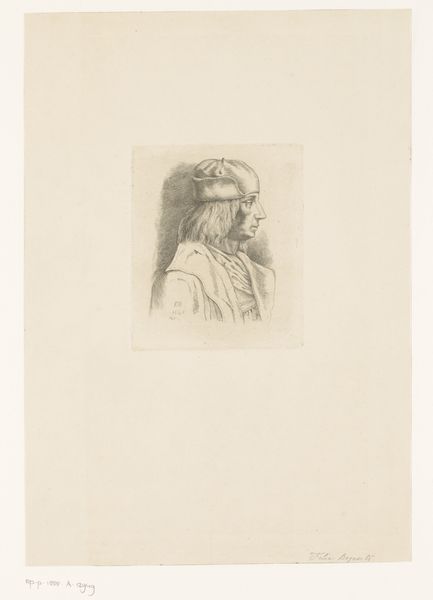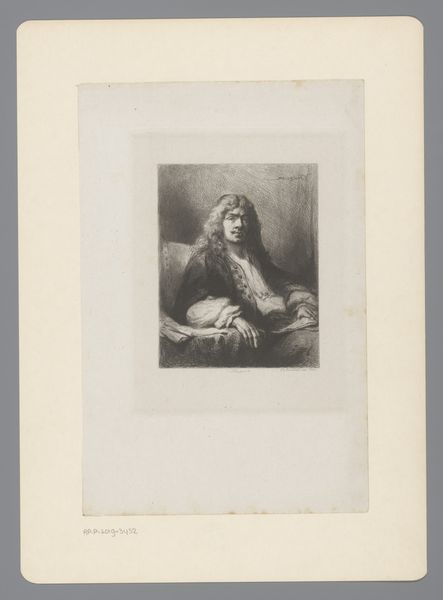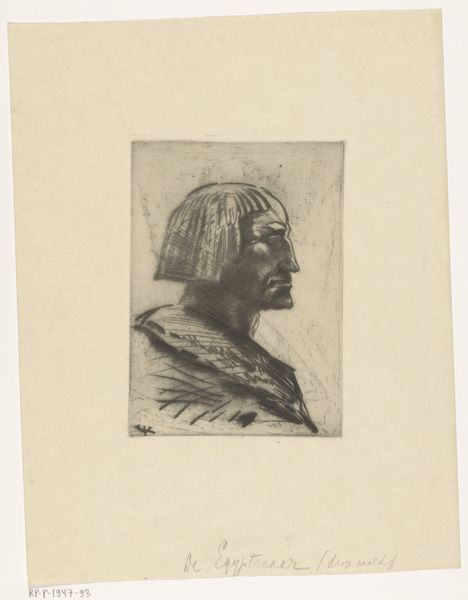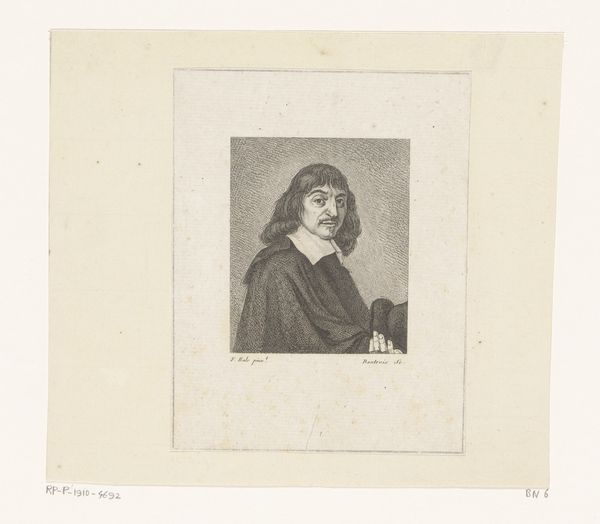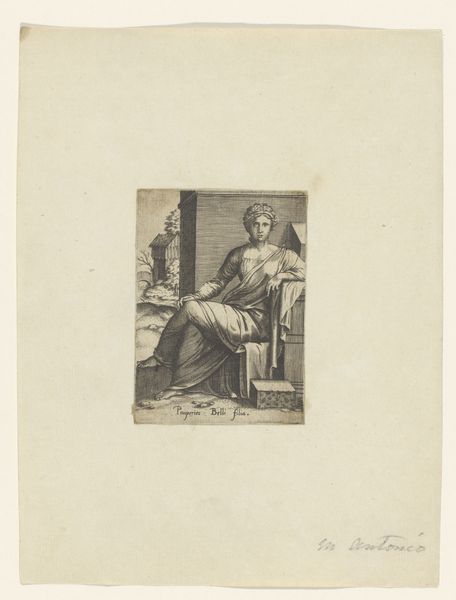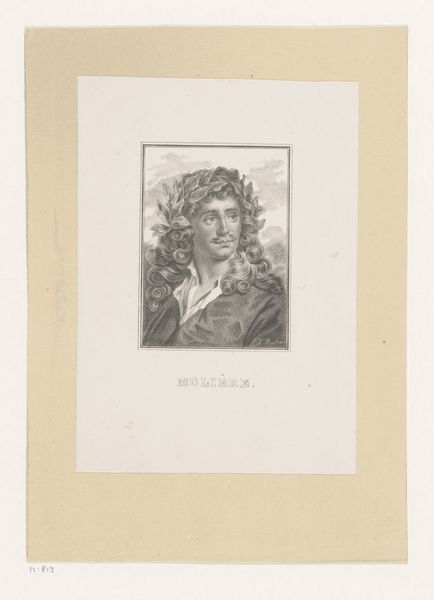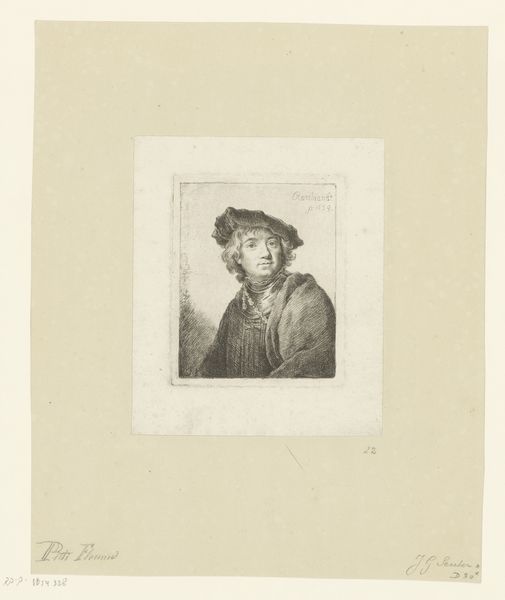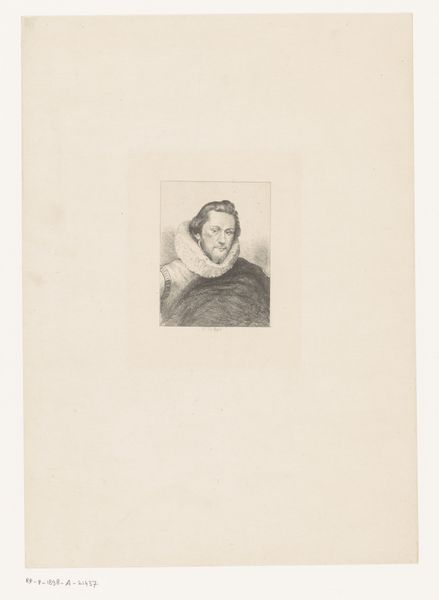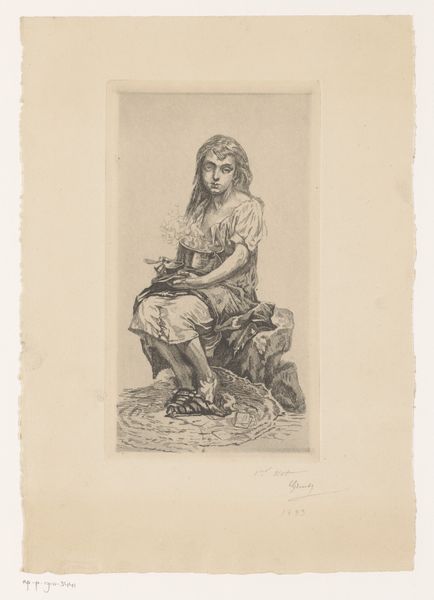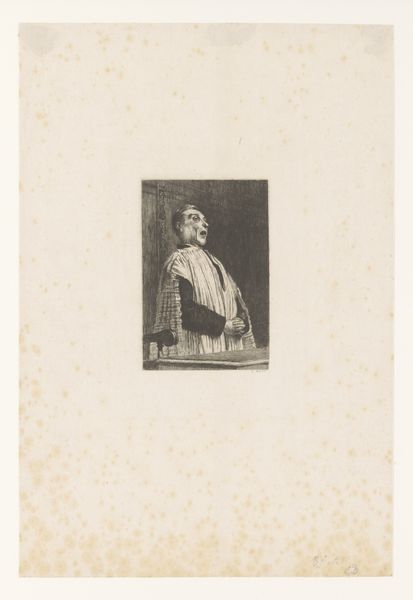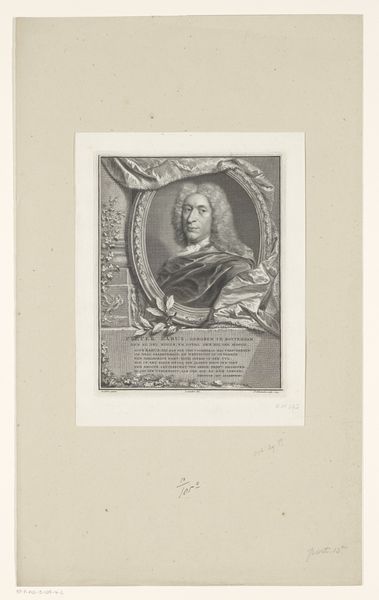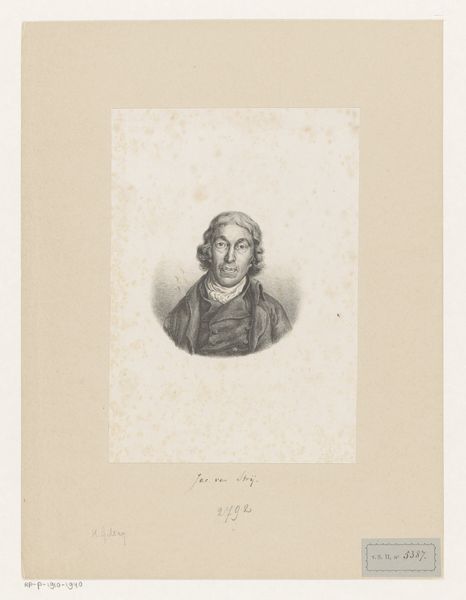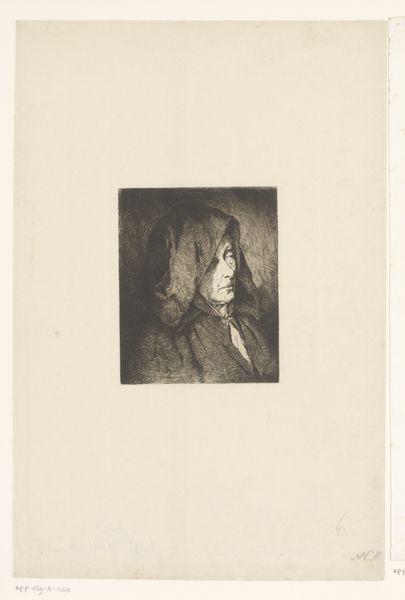
Dimensions: height 185 mm, width 130 mm
Copyright: Rijks Museum: Open Domain
Editor: So, this is *Portret van Wallerant Vaillant*, made in 1864. It's an engraving, a print on paper. There’s something about the gaze of the figure, it’s engaging and confident, yet there is an openness that really comes through. What stands out to you as you look at this piece? Curator: The open hand, palm upward, isn't simply a gesture, is it? For centuries, the open palm has signified honesty, offering, sometimes even vulnerability. Here, it seems to negotiate between Vaillant's evident status and a certain willingness to connect, or perhaps to teach. Note how his robe almost mimics the lines of classical drapery - evoking ideas of rhetoric and even philosophy. Editor: I see what you mean! That links with how the baroque style uses strong lines and form, perhaps to represent knowledge? I never really thought of posture and clothing like that, as carrying symbols or having memory. Curator: Absolutely. Consider the cultural weight of portraits themselves. What purpose did they serve beyond likeness? They solidified legacy and reinforced power through visual cues. Even now, we see that same cultural drive towards documenting legacy, and that desire impacts the forms that documentation takes, and how its memory lives on through that form. What do you think the artist intended to portray here? Editor: Possibly a man of importance who is willing to engage with new ideas? I hadn't considered the hand gesture as a symbol of honesty, which casts a different light on my reading. Thank you. Curator: Indeed. By considering how signs and symbols are used, and their emotional and historical implications, we begin to unravel not just the "what," but the "why" of the work, to create a much richer interpretation.
Comments
No comments
Be the first to comment and join the conversation on the ultimate creative platform.
